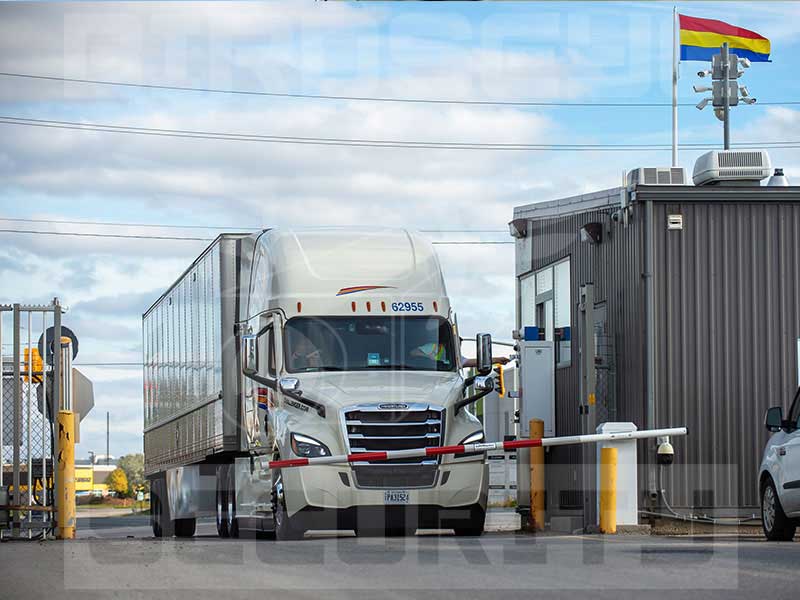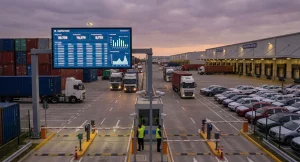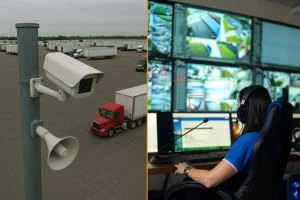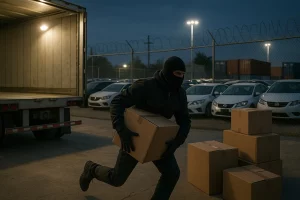How Live Video Monitoring Improves Transportation Logistics
Proper transportation logistics is important to anyone running a trucking company, warehouse, factory, or other similar businesses. If you can’t effectively organize and track the flow and storage of goods, this slows down your processes and can potentially lead to significant problems and major financial losses.
Live remote monitoring solutions are excellent tools for improving transportation logistics in an efficient and cost-effective way. Using live monitoring services can help with inventory tracking and control, ensure that deliveries are on time, and much more.
To understand how these tools can help transportation logistics, it’s important to first understand how they work.
Improving Efficiency and Warehousing Logistics
When it comes to warehousing logistics, being efficient and accurate is crucial. Otherwise, you could spend valuable time looking for the right shipments, end up delaying shipments while you’re searching, or you may even send the wrong containers out on a truck. This can be disastrous for your business.
Not only are delays costly, but they also prevent you from getting work done. Plus, if your shipments are late or incorrect, you could cause serious damage to your reputation. Customers expect accuracy and timeliness when they’re working with a warehousing logistics provider. If you fail to do this, your business could be in serious trouble.
Since all these factors are true, many warehouses and logistics providers find themselves looking for ways to improve their accuracy and efficiency. Of course, cost is important in these situations as well. However, another key factor is that the solution doesn’t negatively affect your overall workflow.
You don’t want to end up in a situation where you’re forced to change everything about your business unless it’s absolutely necessary. A solution that checks all these boxes is live remote monitoring.
What is Live Remote Monitoring?
A live remote monitoring system uses surveillance cameras, two-way speakers, and other security tools to monitor activity at a property. There are many uses to these systems, including inventory tracking and surveillance.
How Live Monitoring Helps Inventory Tracking
As vehicles arrive at your site, monitoring agents use cameras to manage these vehicles, direct them to parking areas, process manifests, match contents to trailers, and ensure that these vehicles park in their assigned spots. If there are any issues, such as a driver parking in the incorrect space, agents can intervene by using two-way speakers to direct them to the correct spot.
This prevents issues where trailers are parked in unexpected areas and causes drivers or staff to spend time searching for the right trailer. It also prevents having the wrong trailer accidentally delivered to a property.
As assets are unloaded from the trailer, monitoring agents can track and record their movement. This process is aided by onsite GPS tracking devices. You won’t lose track of anything on your site.
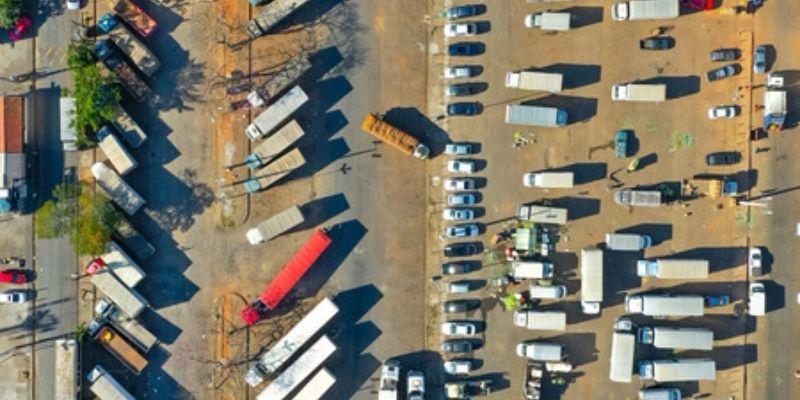
When vehicles arrive at the gates to a truck yard or warehouse, the driver can collect a removable GPS tracking transponder which can be used to track containers and trailers onsite. All of the required information is logged by the remote security agent when the tracker is collected, so it’s easy to keep track of who signed out the device, the time, where the tracker was placed, and more.
As assets move throughout the property, their location will be tracked, ensuring that nothing is lost or misplaced. All information is available in real time and backed up by video footage. This is possible because of the fact that cameras are installed so that agents can view the entire property 24/7.
How Live Monitoring Compares to Other Transportation Logistics Tools
Live remote monitoring has many benefits compared to other tools that are often used for inventory tracking. For instance, in situations where drivers are expected to maintain their own logs each time assets are moved, the possibility for errors exists.
Someone could make an error in their records or miss recording something. Handwritten notes could even be difficult to read, and mistakes could be made at any step. Plus, keeping these records is also an intrusive process that involves many people, and thus it is quite time consuming for everyone involved.
These issues also exist in situations where staff members or security guards are specifically tasked with transportation logistics roles. While these individuals may be tasked with the role, and therefore they won’t forget to do the required tracking, they could still make errors. There’s also the fact that it can become quite costly to use individuals solely for tracking purposes.
Live remote video monitoring is a powerful and cost-effective alternative to security guards.
With live remote monitoring and GPS tracking, the process is handled seamlessly by monitoring agents and there are very few extra steps that anyone needs to follow. Monitoring systems are quite cost-effective, especially when you consider that they provide other services in addition to inventory tracking. GPS trackers are always accurate and all records are supported by video footage, drastically reducing errors.
Monitoring systems can provide security, access control, safety monitoring, protocol enforcement duties, and much more. When the combined value of the monitoring agents is added up, it becomes quite the cost-effective option.
What does Live Monitoring Mean for Warehousing Logistics?
As mentioned, a live monitoring system allows trained staff to watch over the property. This can help with inventory and logistics.
For instance, when a truck arrives at the gates to the property, agents will check the driver’s identity and record identifiable information about the vehicle and its trailer, such as license plate numbers, trailer numbers, container numbers, etc. All of this information is recorded. The truck is then assigned to a parking space. This space is recorded and agents will confirm that the driver has followed the assignment.
Using the cameras, the monitoring team can make sure the driver parks in the correct spot and request that they move (using two-way speakers) if the assignment isn’t followed. This eliminates any confusion that could arise from driver parking errors.
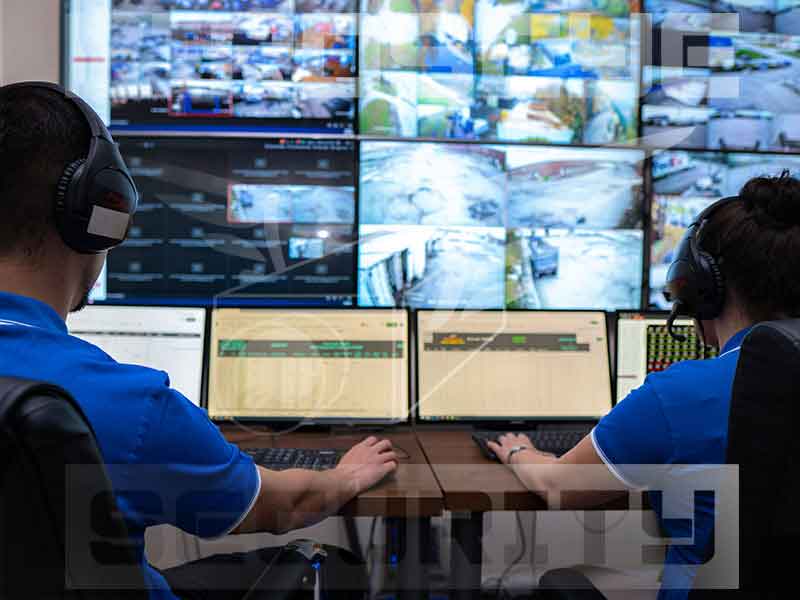
If the goods are unloaded from the trailer or moved to a different area, these changes are noted as well. Whenever assets are moved, not only will this movement be recorded, but there will be video footage to support these claims. This drastically reduces the chances of anything being misplaced.
Agents can also view any unexpected changes, such as situations where containers are moved when they should not be. If this happens, agents will alert the people onsite and request that they return the containers to the spot where they are expected to be placed.
Containers and trailers can even be outfitted with GPS transponders when they arrive at the site. Monitoring agents can then accurately track them as they move throughout the property. Accuracy is crucial when it comes to warehousing logistics, so having this information 24/7 makes the property more efficient and organized.
In addition, since live remote monitoring agents can also watch for criminal activity, they’ll be able to stop break ins and theft. This not only means your business will not have to suffer through these losses, but it also eliminates the risk of having key goods stolen and not available for shipping.
Birdseye Security Solutions is a North American leader in live remote monitoring and facility supervision. With years of experience working with trucking companies, warehouses, industrial sites, and much more, we understand the importance of inventory control and other transportation logistics processes.
For more information on our services and how we can help your business run more efficiently, please do not hesitate to contact us today. Our team can help you find the right option for your business.

